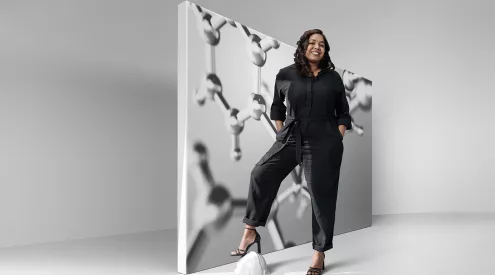On the Arrive Alive website, we find an in-depth analysis pertaining to many of the contributing factors to road crashes. Human error and negligence are the main causes of crashes. This includes not obeying the rules of the road, speeding, driving under the influence of alcohol etc.
Some of these factors are closely related to driver fitness, health, and the physical wellbeing of the driver on the road. Driver tiredness and fatigue, for example, can affect a driver’s ability to drive, especially at night and long-distance.
We also discuss the impact of medication on driving ability. Medications that people may be taking can have side effects like drowsiness. We urge drivers to check on the side effects of medications they take before driving, especially the first time that they take them.
People with chronic conditions and diabetes need to take their medications as prescribed, to avoid incidents when diving. An example is a diabetic who does not have a meal or only a smaller meal than normal but takes a prescribed dose of insulin and is then at an increased risk when driving.
Managing Health and Preventing Road Crashes
Active management of a person’s chronic conditions will decrease the risk of a medical event while driving.
A failure to manage health and physical wellbeing will affect the ability of a driver to safely operate his vehicle. This can result in a crash which can lead to further injuries to the patient and other people. It also means paramedics need to treat the medical condition and traumatic injuries.
In this section, we would like to take a closer look at some specific Medical Incidents and how these contribute to road crashes.
We decided to approach a few of the experts from Emergency Medical Services to gain more insights:
What are the major medical conditions contributing to road crashes – are there other conditions than Heart Attacks, Stroke, Effects from Diabetes, Blackouts and Epileptic Seizures?
There are numerous medical conditions that can be contributing factors to collisions and road crashes. The most common would be cardiac emergencies, cerebral emergencies, epileptic seizures as well as syncope (fainting). These mentioned emergencies would affect the driver’s level of consciousness and therefore could be the cause of a collision or road crash.
Apart from those already mentioned, hypoglycaemia or what the general public refers to as “Low Blood Sugar” and Migraines could potentially be debilitating and blind the driver.
How would we describe a “Blackout”?
Different people have different understandings and different phases (passing out, blanking out) for this. It may have different manifestations for different people and can range from a lapse in consciousness to being unresponsive for a period before recovering.
Blackout, or syncope, is the medical word for fainting. Generally, a blackout is described as a period of unconsciousness or lack of awareness when you are unable to recall what happened or what you did and is also commonly referred to as “fainting” or “passing out” and could be caused by certain medical conditions. Some of these examples are low blood pressure, dehydration or standing for long periods in a hot environment or as a result of ingesting intoxicating substances such as drugs or alcohol.
Although not common, people who have panic or anxiety attacks are also prone to blackout which can occur while driving.
How would you best describe the “physical difference” between these medical conditions occurring begin the steering wheel?
Here are the signs and symptoms of above-mentioned emergencies:
Heart attack
A heart attack poses significant problems. People miss-diagnose this as heartburn or indigestion, and when things really get bad, they want to race themselves to a hospital. By doing this they put extra stress on the heart that can lead to the heart stopping and the patient going into an unconscious state immediately.
The correct advice for these patients is rather to pull over and call for an ambulance to assist them. The signs and symptoms are normally chest pain radiating to the arm or jaw, accompanied by perfuse sweating, fast week pulse and anxiousness.
Other symptoms include:
- Squeezing sensation in your chest
- Nausea
- Shortness of breath
- Cold sweat
- Fatigue
- Radiating pain
Stroke
Strokes mostly happen to patients with a long-suffering of high blood pressure and cholesterol. When patients have regular check-ups and use their medication the risk of having a stroke can be reduced.
The risk is once again that when the patients feel terrible, they realise their blood pressure is up and they need to get to the doctor. Driving in such a condition is not recommended. If you drive you to get more stressed thus leading to the blood pressure elevating. If this goes too far a vessel can pop in the brain leading to a stroke.
Symptoms include:
- Confusion
- Dizziness
- Numbness
- Severe headache
- Trouble speaking and walking
- Vision changes
- Weakness
If you suspect someone has had a stroke, assess it with the FAST acronym. “’ F’ is for facial drooping, ‘A’ is for arm weakness, ‘S’ is for slurred speech or difficulty speaking and ‘T’ is for time to call the medical professionals.
The sooner a stroke victim gets professional medical help, the more likely paramedics and doctors will be able to restore blood flow to the affected areas and save brain cells. Stay with the patient until help arrives.
Epilepsy
Epilepsy is a condition that people receive treatment for and where they can operate normally if they stick to the treatment. Problems arrive when they skip the medication. Although they normally get a feeling that a seizure is coming, it might be too late, and they lose control of their body and obviously the vehicle.
Symptoms include
- Confusion
- Staring spell
- Jerking movements
- Loss of consciousness
Diabetes
When those suffering from diabetes stick to the medication and diet they can have a normal functioning life. The problem arises when they take insulin and then do not eat enough, their sugar level drops, they then slip into an unconscious state and lose control of the vehicle.
These patients normally feel lightheaded, are drowsy, have blurred vision, spots in front of the eyes and various other signs that they should pull over.
Problems with these are that people and police can suspect that the patient is intoxicated, this could be very dangerous for the patient, if they are put in a cell it could mean death if they are not treated very quickly.
Syncope/ Fainting
The driver suffering a blackout could present with confusion, slurred speech, erratic behaviour or uncoordinated driving or complaining about reduced visibility.
Signs and symptoms include
- Light-headedness
- Dizzy
- Drowsy
- Changes in vision
- Fainting
Are there any warning signs before driving that could alert the driver of any such medical incident?
This may differ from person to person. Should the driver feel any dramatic changes in their body, this could be an indication or warning sign. Should the driver experience any of the above signs and symptoms, medical attention should be sought immediately.
- Generally, this would be an unforeseen medical emergency where there are no warning signs.
- People with heart attacks may have worsening chest pain.
- Epileptics may have what is called an aura which are disturbances in their sight, smell or smell, which may precede a seizure.
- If you are known to have blackouts you should not be driving until you have been assessed by an appropriate medical specialist who could, depending on the cause could prescribe medication to lower the chances of a blackout while driving.
If you are a passenger next to such a driver – what would be the best warning signs that such a medical incident is occurring?
- This will be stressful, but it is important to keep calm.
- If you are the passenger, make sure to keep a watchful eye out for the driver. See if there are any changes in personality or level of consciousness.
- Encourage the person to pull over as soon as possible into the emergency lane so that an assessment can be made.
- If the patient loses consciousness it is important to hold the steering wheel, put the vehicle into neutral, try and put on the hazards and steer the vehicle to the side of the roadway.
- Once the handbrake is up and the vehicle is stationary, make sure the patient’s airway is open if they are still breathing and call for help.
- A patient whose heart stops needs urgent attention. The patient must be pulled from the car and placed on their back with airway open, start CPR as soon as you called for help.
- Remember early CPR saves lives and if you are alone you can do compressions only for around 10 minutes on an adult successfully.
To carry out hands-only CPR:
- Position the person’s head with their chin up, supine (on their back) preferably on a hard, flat surface
- Place the heel of your hand on the breastbone at the centre of the person’s chest
- Place your other hand on top of your first hand and interlock your fingers
- Using your body weight (not just your arms), press straight down by 5-6cm on their chest
- Try to do 100 to 120 compressions per minute
- Continue until the ambulance arrives
If you are a driver behind the vehicle of such a driver – what would be the best warning signs that such a medical incident is occurring?
It can be exceedingly difficult to pay attention while driving and noticing what another driver is doing in their own vehicle, especially at higher speeds on the freeway.
Should the vehicle be swerving, suddenly braking or behaving differently than other vehicles, this could be an indication that there could be a medical emergency.
Do not drive too close to endanger yourself and your passengers and be ready to call for immediate emergency medical assistance.
What are the best preventative measures to take to avoid becoming a victim of a medical incident resulting in a road crash?
- These medical emergencies can happen at any time and can be difficult to detect at the best of times.
- The best treatment is prevention and the management of chronic medical conditions.
- It is advisable to visit your general practitioner and get regular check-ups.
- Take your medication as prescribed.
- By doing this, you can mitigate the risk of medical emergencies.
- If, however you feel any of the symptoms, pull off the road and call for help. Do not be stubborn and try and drive yourself to a hospital.
What is the best advice for other road users to respond and assist the victim of a medical incident/ episode?
- Should you witness a motor vehicle collision, the first step would be to contact the emergency services.
- While waiting for medical help keep the person safe from injuring themselves or others.
- If you can assist, make sure to stop in a safe place before rendering any assistance.
- Call EMS, speak to the person so long to find out what is wrong with them, in case they are unconscious by the time EMS arrives











